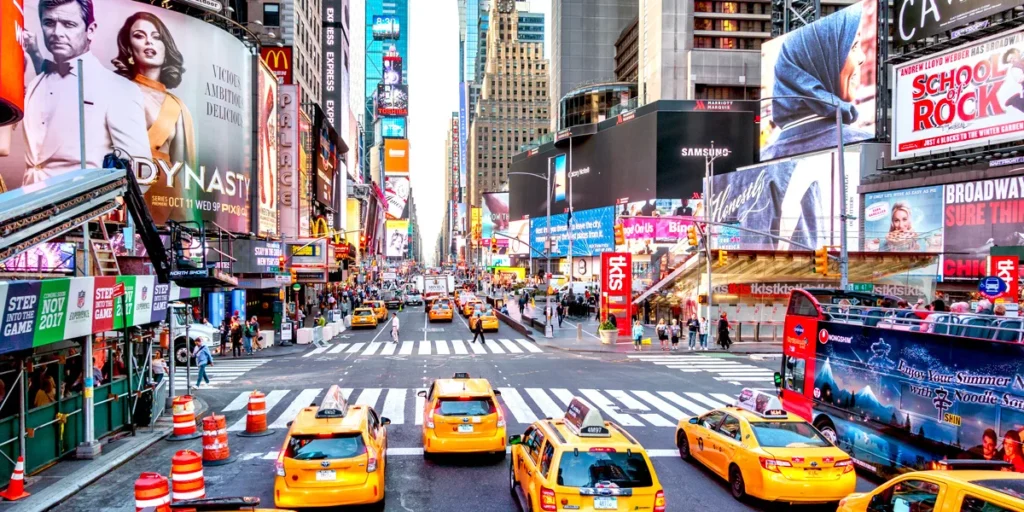Advertising has undergone a profound transformation over the last few decades, evolving from static print ads and one-way broadcast commercials to dynamic, interactive digital experiences. In today’s saturated marketplace, capturing consumer attention requires more than just visibility; it demands engagement that resonates on a personal level. Immersive ad campaigns have emerged as a powerful response to this challenge. By leveraging innovative technology and creative storytelling, these campaigns engage users in a way that traditional ads cannot, fostering deeper emotional connections and driving meaningful interactions with brands on a global scale.
What Makes Immersive Ad Campaigns Stand Out?
Immersive ad campaigns differentiate themselves by moving beyond passive content consumption to active participation. These campaigns create environments where consumers feel involved and engaged, rather than merely watching or reading an advertisement. Whether through augmented reality overlays that bring static images to life or through virtual reality experiences that transport users to brand worlds, immersive ad campaigns captivate audiences by offering sensory-rich, interactive moments. This level of engagement not only increases brand recall but also builds lasting emotional ties, which are essential for customer loyalty in today’s competitive markets.
The Role of Technology in Immersive Experiences
Technological innovation plays a central role in the success of immersive marketing initiatives. Advanced tools like AR and VR provide unique ways for brands to showcase their products and stories, making the consumer experience more vivid and tangible. Immersive ad campaigns integrate these technologies to allow users to try on products virtually, explore detailed 3D models, or even step into completely digital brand environments. The seamless integration of these technologies creates an unforgettable experience that bridges the gap between the physical and digital worlds, making the advertising encounter feel authentic and highly engaging.
Creating Emotional Connections through Storytelling
At the core of every effective immersive ad campaign is compelling storytelling. By weaving narrative elements into interactive environments, brands create emotional connections that go beyond surface-level engagement. Immersive ad campaigns enable consumers to become protagonists in the brand’s story, fostering empathy and personal investment. This method transforms advertising from a one-sided message into a shared experience, where consumers feel understood and valued. Emotional storytelling within immersive frameworks not only enhances memorability but also encourages audiences to develop a deeper affinity toward the brand.
Personalization as a Core Element
Personalization is an essential aspect of modern marketing, and it plays a crucial role in immersive ad campaigns. By utilizing data analytics and AI, brands can customize experiences based on individual preferences, behaviors, and demographics. This tailored approach makes each interaction feel unique and relevant, increasing user satisfaction and engagement. Immersive marketing initiatives that successfully incorporate personalization create a sense of intimacy and exclusivity, making consumers feel that the brand truly understands their needs. This heightened relevance is key to building trust and fostering long-term loyalty.
The Impact on Consumer Behavior and Purchase Decisions

Immersive marketing initiatives profoundly influence consumer behavior by encouraging active participation rather than passive observation. When users engage with immersive content, they develop stronger emotional bonds and a greater sense of trust in the brand. This heightened engagement often translates into increased brand recall and a higher likelihood of purchase. Research shows that consumers exposed to immersive ad campaigns are more willing to share their experiences and recommend the brand, amplifying word-of-mouth marketing. This demonstrates how immersive ad campaigns can drive not only immediate sales but also long-term brand advocacy.
Challenges and Considerations in Implementing Immersive Campaigns
Despite their potential, immersive ad campaigns come with challenges that require strategic planning and thoughtful execution. Developing high-quality immersive content demands significant investment in technology, creative resources, and expertise. Brands must ensure the user experience is intuitive and accessible, avoiding overly complex interfaces that could frustrate consumers. Privacy concerns around data collection and personalization must also be carefully managed with transparency and compliance to build and maintain consumer trust. Balancing these factors is critical to the success of immersive ad campaigns and their acceptance by a diverse global audience.
Examples of Successful Immersive Ad Campaigns Globally
Globally, numerous brands have set impressive benchmarks with immersive marketing initiatives that have captured audience imaginations and driven business results. Automotive brands have pioneered VR test drives, giving potential buyers an immersive taste of new models without leaving their homes. Fashion companies leverage AR to create virtual fitting rooms, allowing customers to try on clothes digitally. Even entertainment and travel industries use immersive ad campaigns to transport users to fantastical worlds or dream destinations. These examples demonstrate the versatility of immersive marketing initiatives across industries and regions, illustrating their power to inspire and engage diverse audiences.
Future Trends in Immersive Advertising
The future of immersive ad campaigns is bright, fueled by continuous technological advancements. Emerging technologies such as artificial intelligence, haptic feedback, and mixed reality promise to create even richer, more engaging experiences that stimulate multiple senses simultaneously. The integration of social sharing features will enable consumers to spread immersive content organically, expanding brand reach and community-building. As 5G networks become widespread, faster connectivity will allow for more seamless, high-quality experiences, making immersive marketing initiatives accessible to an even broader audience worldwide.
Global Reach and Cultural Adaptation
Immersive ad campaigns have the unique advantage of transcending geographic and cultural boundaries, but success requires careful localization. Brands must adapt their messaging, imagery, and interactive elements to resonate authentically with diverse cultures while maintaining a consistent global brand identity. Cultural sensitivity in immersive marketing initiatives ensures the experience is inclusive and relevant, fostering acceptance and enthusiasm from audiences around the world. This adaptability is essential for brands seeking to leverage immersive technologies for international growth and cross-cultural connection.
Measuring the Success of Immersive Ad Campaigns
Evaluating the effectiveness of immersive ad campaigns requires evolving beyond traditional marketing metrics such as impressions and click-through rates. Brands now focus on measuring deeper engagement metrics like interaction duration, emotional response, and conversion rates tied directly to immersive experiences. Advanced analytics platforms provide real-time data that helps marketers refine campaigns on the fly for better performance. By understanding these nuanced metrics, brands can justify investment in immersive marketing initiatives and continuously optimize for higher returns and greater audience satisfaction.
Conclusion: The Lasting Impact of Immersive Ad Campaigns
Immersive ad campaigns represent a transformative shift in how brands engage with audiences worldwide. By blending innovative technology, storytelling, and personalization, these campaigns create deeply engaging experiences that build emotional connections and drive meaningful actions. Although challenges like investment and privacy concerns remain, the benefits of immersive marketing initiatives—increased brand loyalty, enhanced consumer trust, and higher conversion rates—are undeniable. As technology and consumer expectations evolve, immersive advertising will continue to be a cornerstone of effective global marketing strategies, helping brands stand out and forge lasting relationships with audiences everywhere.
















